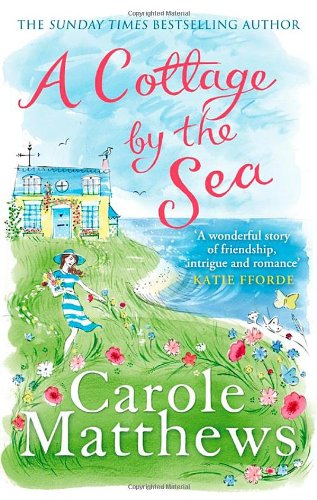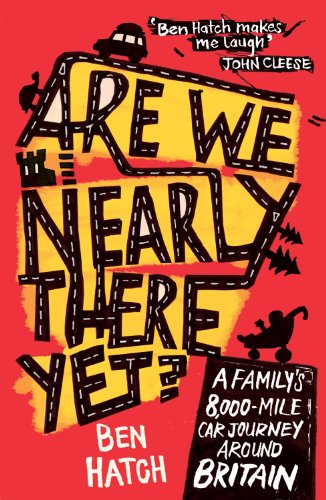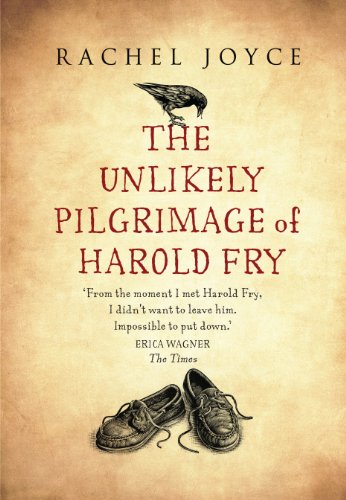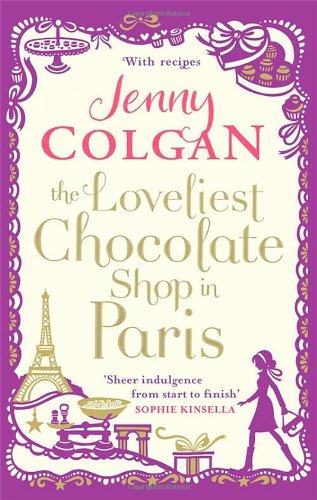This post can now be found on the new TripFiction website here



| from skoobyblue.blogspot.com Caerfai Bay, Pembrokeshire |

 Are We Nearly There Yet by Ben Hatch tells the story of Ben, his wife Dinah and their two pre-school children, Phoebe and Charlie who are commissioned by Frommers (the American equivalent to Time Out) to set out on a 5 month family odyssey, an 8000 mile journey around Britain. Only the foolhardy, surely, would take up the baton and set off from the Brighton area in a westerly direction and then up to the northern sphere, with a boot and roofrack full to bursting with luggage, two tinies in tow... but gamely, they embarked on this trip with aplomb and enthusiasm. In parts a chronicle of hilarious experiences, in part a travelogue that honestly charts the sights worth seeing (and those to be missed), interspersed with enough poo and vomit to keep the whole family (and the readers) down to earth (including an unusual encounter with a toothbrush, which results in a visit to Hexham Hospital). Encounters abound, with the World's Largest Pencil (or possibly not, as it transpires) at the Cumberland Pencil Museum (and Borrowdale graphite was the drawing material of choice of Michelangelo, well, I never....); from negative encounters in the Lake District (this is depressing when it is England's largest and best known national park, and is widely considered the most romantic spot in England - Bill Clinton proposed to Hilary here, as did Sir Paul McCartney to Heather Mills, which, of course, did not end well....); to the Robin Hood Experience (worth a miss, it would seem); to Craster, which at the turn of the 20th century was the UK Kipper Capital, smoking over 25,000 fish per day (the fish were "gutted by Scottish fishwives, who lived in ramshackle buildings called kip houses, suitable only for sleeping in" - hence the saying, to have a kip.
Are We Nearly There Yet by Ben Hatch tells the story of Ben, his wife Dinah and their two pre-school children, Phoebe and Charlie who are commissioned by Frommers (the American equivalent to Time Out) to set out on a 5 month family odyssey, an 8000 mile journey around Britain. Only the foolhardy, surely, would take up the baton and set off from the Brighton area in a westerly direction and then up to the northern sphere, with a boot and roofrack full to bursting with luggage, two tinies in tow... but gamely, they embarked on this trip with aplomb and enthusiasm. In parts a chronicle of hilarious experiences, in part a travelogue that honestly charts the sights worth seeing (and those to be missed), interspersed with enough poo and vomit to keep the whole family (and the readers) down to earth (including an unusual encounter with a toothbrush, which results in a visit to Hexham Hospital). Encounters abound, with the World's Largest Pencil (or possibly not, as it transpires) at the Cumberland Pencil Museum (and Borrowdale graphite was the drawing material of choice of Michelangelo, well, I never....); from negative encounters in the Lake District (this is depressing when it is England's largest and best known national park, and is widely considered the most romantic spot in England - Bill Clinton proposed to Hilary here, as did Sir Paul McCartney to Heather Mills, which, of course, did not end well....); to the Robin Hood Experience (worth a miss, it would seem); to Craster, which at the turn of the 20th century was the UK Kipper Capital, smoking over 25,000 fish per day (the fish were "gutted by Scottish fishwives, who lived in ramshackle buildings called kip houses, suitable only for sleeping in" - hence the saying, to have a kip. Our second featured book is a work of fiction, and at 87 days and 627 miles it covers considerably less ground. The Unlikely Pilgrimage of Harold Fry by Rachel Joyce. is a gentle meander from Kingsbridge in Dorset to Berwick-upon-Tweed, the northernmost town in England, as Harold Fry finds a fit of passion on his way to post a letter and just continues walking in a northerly direction. Along the way he encounters beautiful English countryside, which is dreamily described and will just transport you to this green and pleasant land: Trees and flowers seemed to explode with colour and scent. The trembling branches of the horse chestnut balanced new candle spires of blossom. Rambling roses shot up garden walls, and the first of the deep red-peonies opened like tissue-paper creations. The apple trees began to shake off their blossom, and bore beads of fruit; bluebells spread thick like water through the woodlands. The dandelions were already fluffheads of seed all kinds of weather is thrown at him, from blistering sun to rain that drove at him in thick pins... (isn't that just a lyrical description of England at its best?).
Our second featured book is a work of fiction, and at 87 days and 627 miles it covers considerably less ground. The Unlikely Pilgrimage of Harold Fry by Rachel Joyce. is a gentle meander from Kingsbridge in Dorset to Berwick-upon-Tweed, the northernmost town in England, as Harold Fry finds a fit of passion on his way to post a letter and just continues walking in a northerly direction. Along the way he encounters beautiful English countryside, which is dreamily described and will just transport you to this green and pleasant land: Trees and flowers seemed to explode with colour and scent. The trembling branches of the horse chestnut balanced new candle spires of blossom. Rambling roses shot up garden walls, and the first of the deep red-peonies opened like tissue-paper creations. The apple trees began to shake off their blossom, and bore beads of fruit; bluebells spread thick like water through the woodlands. The dandelions were already fluffheads of seed all kinds of weather is thrown at him, from blistering sun to rain that drove at him in thick pins... (isn't that just a lyrical description of England at its best?). The Novel:
The Novel:

 We feature the Sea of Ink by Richard Weihe which spans much of the 17th century in China. It follows the life of Zhu Da, a descendant of the Ming Dynasty, who has the tremendous gift of producing beautiful pieces of artwork. His scholarship progresses, as his character morphs and adapts to the new regime of the Manchus, through Buddhism studies to feigned madness, in an attempt to can keep his integrity as an artist and continue his quest to capture the essence of nature with a single brushstroke. The book is a thought-provoking study of scholarship and persona, and is beautifully translated from the German original.
We feature the Sea of Ink by Richard Weihe which spans much of the 17th century in China. It follows the life of Zhu Da, a descendant of the Ming Dynasty, who has the tremendous gift of producing beautiful pieces of artwork. His scholarship progresses, as his character morphs and adapts to the new regime of the Manchus, through Buddhism studies to feigned madness, in an attempt to can keep his integrity as an artist and continue his quest to capture the essence of nature with a single brushstroke. The book is a thought-provoking study of scholarship and persona, and is beautifully translated from the German original.